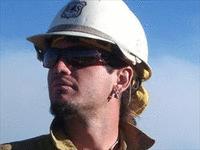 There has been a new development in the lawsuit that U.S. Representative Denny Rehberg is bringing against the Billings Montana Fire Department. Rehberg and his wife have been attempting to obtain money from the fire department to compensate them for a 2008 fire that burned some undeveloped land that they own. In the lawsuit that was filed July 2, 2010, he accused the fire department of not having firefighters on the fire long enough, which allowed the fire to flare up again and burn additional acres.
There has been a new development in the lawsuit that U.S. Representative Denny Rehberg is bringing against the Billings Montana Fire Department. Rehberg and his wife have been attempting to obtain money from the fire department to compensate them for a 2008 fire that burned some undeveloped land that they own. In the lawsuit that was filed July 2, 2010, he accused the fire department of not having firefighters on the fire long enough, which allowed the fire to flare up again and burn additional acres.
The Billings Gazette is reporting that Rehberg and his wife have offered to settle the lawsuit “without monetary compensation” if the city will adopt “specific wildland firefighting standards” that may prevent future property loss or damage, according to a letter provided to The Billings Gazette by Jan Rehberg. Ms. Rehberg was quoted as saying:
It’s not about the money. It’s about recognizing wildland fires can cause significant damage, and that’s why we’re interested in making sure it doesn’t happen again.
In a written response to the seven-page letter that Rehberg’s attorney sent to Michele Braukmann, the city’s attorney, in which the settlement offer with the demands was made, Braukmann wrote in part:
..Suffice it to say, I will not waste my client and the taxpayer’s resources by responding to the letter’s many inaccurate, self-serving, and unsubstantiated assertions. I likewise will not respond in kind to the public comments you made in last week’s Billings Gazette article, in essence calling me a “liar”. I do not now, nor will I ever in my practice, litigate by name-calling or making disparaging comments about or to opposing parties and attorneys.
The trial for the lawsuit is scheduled for December 3, 2012, one month after the election in which Denny Rehberg is a candidate for the Senatorial seat occupied by Jon Tester. Representative Rehberg is giving up his seat to challenge Tester. A pending trial against the fire department might adversely affect Rehberg’s chances in the election.
Fire-management-policy-by-lawsuit is never a pleasant thought.






